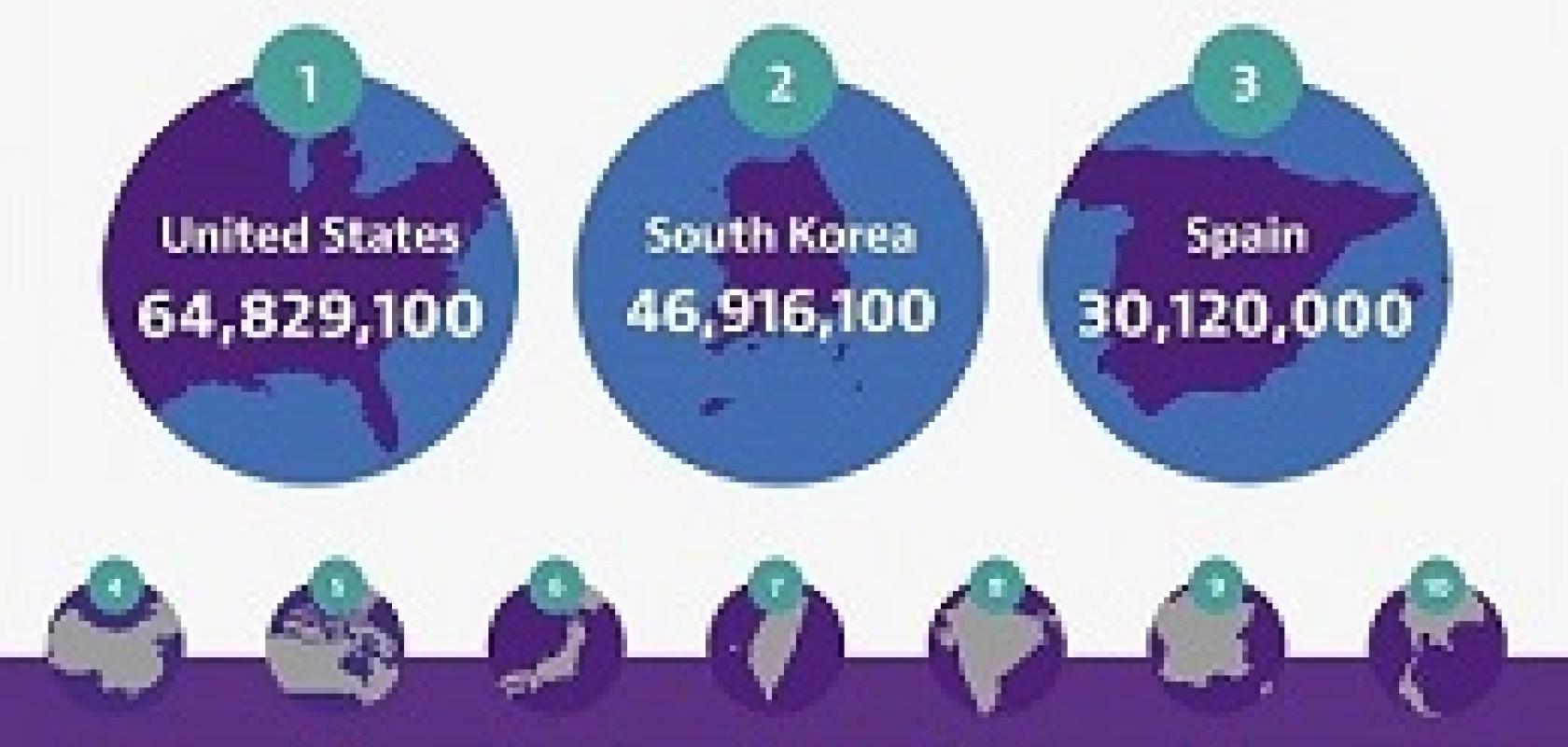VIAVI Solutions has released the latest data from its Gigabit Monitor, which points to 301million people across 49 countries now enjoying gigabit data. This represents an increase in gigabit internet deployments of 38 per cent since May 2017. It means that 4.2 per cent of the global population now has gigabit internet available to them.
The Gigabit Monitor is a web-based tool that is designed to showcase the global gigabit internet provision state-of-play, based on publicly available data. The living database is updated regularly, based on deployment announcements and feedback from users. Each country's gigabit internet profile displays the estimated population coverage, global ranking, gigabit launches over time and a listing of local gigabit providers.
Notably within the findings of the most recent data, the number of people with access to gigabit LTE has surged to 74 million, based on large-scale deployments across countries including the United States, South Korea and China, over the past few quarters, which makes gigabit LTE the second most widely available form of gigabit internet, after fibre. Fibre itself increased its global share of gigabit deployments to 90.4 per cent, although this is noted to include a large volume of micro scale deployments. Interestingly, the number of hybrid fibre coaxial (HFC) deployments each quarter is also now tracking closely with fibre rollouts, whereas fibre deployments outpaced HFC up until 2016.
In terms of markets, the United States remains the country with gigabit internet available to the largest number of people (over 64 million). Close behind are South Korea with access for 46.9 million, Spain with 30.1 million, China with 20.7 million and Canada with 15.7 million. The UK currently has gigabit internet available to 2.9 million.
In terms of the percentage of population coverage, Singapore has the greatest gigabit coverage, with gigabit internet available to 95 per cent of its population. Singapore is followed by South Korea with 93 per cent, Moldova with 90 per cent, Qatar with 78 per cent and Spain and Portugal tying at 65 per cent. The UK population coverage is estimated at 4.5 per cent, so there is more to be done. This is consistent with the latest data gathered and published by research group M-Lab and UK broadband comparison site Cable.co.uk, which found that the UK had fallen down the global broadband speed delivery rankings (see UK broadband speeds fall lower down global league table as infrastructure recommendations published).
Since the beginning of 2017, gigabit internet has been introduced in nine countries for the first time. The new gigabit countries are Australia, Croatia, Estonia, Germany, Kazakhstan, Malta, Monaco, Oman and Russia. Commenting on the monitor’s results, Sameh Yamany, chief technology officer at VIAVI Solutions said: ‘It is fascinating to see how public and private companies, and even governments are pushing for gigabit internet to become an economic enabler for their customers, citizens or their own businesses. During the last 12 months, gigabit internet deployments have increased by 38 per cent, demonstrating that the global pace of deployment is progressing strongly.
‘Beyond the top-line figures, the major story that we are seeing is how the shape of gigabit internet provision is changing,’ Yamany continued. ‘For the first time, gigabit LTE has now become a significant force in gigabit provision, as 74 million people around the globe have access to it. But whether it is fibre, HFC, LTE or 5G in the near future, the onus is on service providers to ensure that the hoped-for speeds and experience match consumer expectations, which requires a robust discipline of network monitoring, testing and troubleshooting.’


